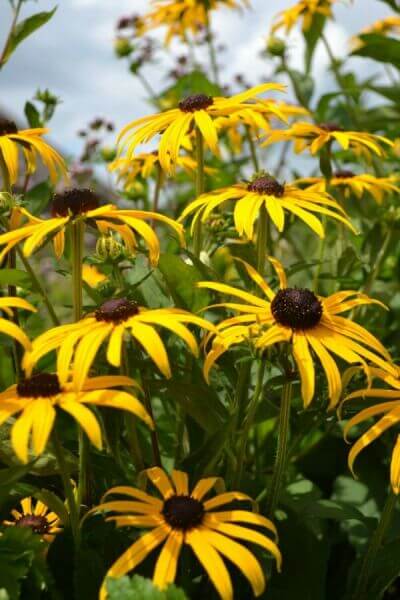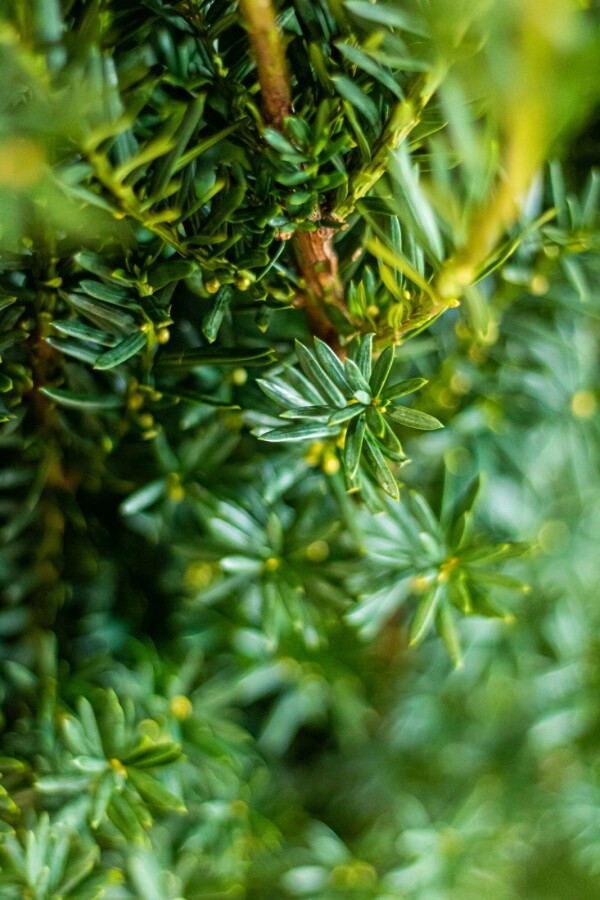Hedge Plants For Visual Barriers
Hedge Plants For Visual Barriers
Blog Article
Hedging Plants For Architectural Interest
Improve your garden's attraction with lavish hedge varieties such as Yew (Taxus), Thuja, Laurel, Photinia, and Bamboo, celebrated for their structural integrity and environmental advantages.
Yew and Thuja provide evergreen coverage and winter season resilience, while Laurel provides rapid growth and broad, aromatic leaves.
Photinia includes seasonal charm with its dynamic red foliage, and Bamboo provides a low-maintenance, serene ambiance.
These hedges enhance air quality, decrease sound, and develop tranquil, private areas.
Correct planting, spacing, and maintenance make sure energetic growth and environmental consistency.
Check out how these lush varieties can raise your garden's appeal and wellness.
Key Takeaways
Transform Your Garden With Lush Hedge Varieties
- Select Yew for its thick, evergreen development and unparalleled longevity.
- Choose Laurel for its quick development and broad leaves, making sure fast privacy.
- Choose Photinia for its vibrant seasonal foliage, which turns a striking dark red.
- Use Bamboo for a low-maintenance, winter-hardy hedge with visual appeal.
- Area plants 2-3 per meter and prune frequently for optimal growth and health.
Popular Hedge Plants
When transforming a garden with lush hedge varieties, it's necessary to consider popular hedge plants such as Yew, Thuja, Laurel, and Photinia due to their distinct qualities and benefits.
Yew (Taxus) is highly esteemed for its longevity and thick, green development, making it a prime option for sustaining landscapes.
Thuja is kept in mind for its evergreen foliage and robust winter season strength.
Photinia includes seasonal vibrancy with red leaves that darken with time, developing vibrant visual appeal.
Laurel uses quick development and fragrant, broad leaves, ideal for fast privacy.
Furthermore, Bamboo is an exceptional option for ambiance, providing a low-maintenance, winter-hardy option that enhances the garden's visual with its classy, swaying walking sticks.
These selections cater to a range of horticultural requirements and preferences.
Benefits of Garden Hedges
Garden hedges use a plethora of advantages, making them an important addition to any landscape. These natural barriers are affordable to implement and provide substantial wind security, enhancing air circulation and adding to noise reduction. The thick foliage of hedges like Thuja and Beech guarantees privacy by blocking exposure, developing a remote and serene environment.
Hedges likewise play a vital function in microclimate regulation, supplying a stable environment that cultivates plant growth and minimizes temperature fluctuations. Their complex leaf structures filter pollutants, enhancing air quality and contributing to a much healthier garden ecosystem.
Additionally, hedges excel in sound decrease, taking in and deflecting acoustic waves to lower ambient sound levels. This double functionality of supplying both visual and acoustic personal privacy enhances the general tranquility and aesthetic appeal of any garden.
Planting and Upkeep Tips
For a successful hedge, careful preparation of the planting area is crucial. Ensure the soil has proper pH and drain to support strong root advancement.
Space the plants properly for the picked species. Water the hedge regularly during its initial development stage, adjusting as needed with seasonal modifications.
Carry out a systematic insect control and illness avoidance strategy, using chemical or natural treatments when necessary. Regularly examine for aphids, termites, and fungal infections.
Apply mulch to maintain wetness and reduce weeds. Seasonal pruning promotes dense growth and air circulation, vital for plant health.
Following these standards will assist you cultivate a lively, well-maintained hedge that enhances the beauty of your garden.
Spacing and Trimming Guidelines
Spacing and Trimming Guidelines
Appropriate spacing and trimming are important for cultivating healthy, aesthetically appealing hedges. Appropriate spacing makes sure each plant gets enough nutrients, light, and air flow.
Follow these standards for ideal hedge upkeep:
- Spacing: Position hedge plants 2-3 plants per meter to motivate robust growth.
- Pruning Methods: Regular pruning is important for maintaining desired hedge height and shape. Cut brand-new development in summertime and cut down older wood during winter.
- Seasonal Care: Adjust trimming schedules and methods according to seasonal requirements to make sure plant health.
- Hedge Height: Regularly monitor and trim to keep the wanted hedge height and accomplish uniform visual appeals.
Abiding by these steps will ensure your hedge grows, boosting both the appeal and functionality of your garden.
Choosing the Right Hedge
Picking the Right Hedge
Choosing the suitable hedge involves evaluating factors such as fully grown height, foliage density, and environmental resilience. Effective hedge plant choice needs understanding each species' development qualities and site-specific adaptability.
For instance, Yew (Taxus) offers exceptional longevity and dense development, while Thuja is notable for its winter season resilience. Furthermore, considering upkeep requirements is crucial; fast-growing types like Laurel or Privet demand routine trimming, whereas low-maintenance choices like Bamboo or Ivy might be more effective for those seeking very little maintenance.
Environmental aspects such as soil type, light availability, and wetness conditions should likewise assist the selection procedure. This careful method makes sure the chosen hedges will prosper, providing both practical and aesthetic advantages to the garden landscape.
Shipment and Planting Guidance
To guarantee your hedge plants thrive, they need to be delivered by specialized carriers and planted without delay upon arrival.
Follow these vital actions for successful planting:
- Soil Preparation: Improve the soil with raw material to enhance drain and nutrient content.
- Planting Depth: Create a trench twice the width and equivalent to the depth of the root ball.
- Watering Strategies: Water thoroughly after planting, keeping the soil consistently damp however not filled.
- Mulching: Use a layer of mulch to retain moisture and suppress weeds.
Client Assistance and Service
Offered the crucial role of timely assistance in horticultural pursuits, our client support team is readily available six days a week through telephone, email, and social media to use professional advice and quickly resolve any concerns. Their commitment to fast response times ensures client fulfillment by resolving questions connected to plant health, optimum planting approaches, and upkeep schedules.

Within 48 hours
This extensive support group, reinforced by an outstanding 9.3/ 10 consumer ranking, highlights our dedication to boosting the gardening experience for each client.
Often Asked Questions
How Long Does It Consider Hedge Plants to Develop?
Hedge plants normally need one to three years to become totally developed, with the precise duration differing by types and growing conditions.
Efficient care during this important duration is important for robust growth. Constant watering, watchful weed control, and appropriate fertilizer application are essential in promoting strong root development.
For example, fast-growing types like Laurel may develop quicker, while slower-growing varieties such as Yew might take longer. Diligent upkeep speeds up the facility process, resulting in healthy and thick hedges.
What Are the Finest Hedge Plants for Privacy?
The question of the finest hedge plants for personal privacy involves evaluating evergreen and deciduous alternatives.
Evergreen hedges like Thuja, Laurel, and Cypress offer year-round coverage, ensuring constant personal privacy.
In contrast, deciduous hedges such as Beech offer seasonal personal privacy, shedding leaves in chillier months.
Key upkeep suggestions for privacy hedges consist of regular cutting, fertilizing Additional hints in spring, and appropriate spacing-- generally 2 to 3 plants per meter.
In addition, constant watering and diligent weed elimination are vital for promoting healthy, dense development.
Can Hedge Plants Draw In Wildlife to My Garden?
Yes, hedge plants can attract wildlife to your garden by supplying important advantages like shelter, food, and nesting sites, thereby improving regional biodiversity. For circumstances, yew, holly, and laurel are excellent for bring in birds, while ivy supports a variety of pests.
Nevertheless, it's important to keep in mind that there are some drawbacks, such as increased maintenance to handle pests and routine maintenance. Carefully picking and maintaining hedge varieties can assist balance these benefits and downsides, eventually fostering a sustainable and vibrant community in your garden.
Exist Any Blooming Hedge Plants Available?
Yes, there are flowering hedge plants available that can improve the appeal of your garden.
For instance, Elaeagnus, also referred to as Olive Willow, produces aromatic white flowers in the fall, including a touch of elegance.
Photinia, another popular choice, showcases dynamic red leaves that grow into an abundant green, creating a dynamic visual effect throughout the seasons.
To guarantee these plants grow, it's necessary to practice proper pruning methods and seasonal maintenance, such as cutting brand-new development in the summer season and cutting down in the winter.
These measures will help maintain the health and aesthetic appeal of your flowering hedges.
How Do I Prevent Insects in My Hedge Plants?
To prevent insects in hedge plants, utilize natural insect control techniques and preserve appropriate hedge care. Present useful pests like ladybugs, which victimize damaging insects, to produce a well balanced community.
Routinely examine your hedges for signs of infestation and quickly get rid of any afflicted parts to prevent the spread. Ensure the health of your hedges by applying balanced fertilizers and supplying appropriate water.
Use mulching to keep soil moisture and proper spacing to reduce plant tension and promote robust development. These practices collectively help in minimizing bug concerns and preserving a healthy hedge.
Conclusion
In essence, choosing the right hedge ranges such as Yew, Thuja, and Laurel can change any garden into a peaceful haven. These plants supply year-round greenery, enhance visual appeal, and deal practical advantages like noise reduction and wind defense.
Appropriate planting techniques, precise spacing, consistent watering, and seasonal trimming are essential for ideal development.
Reliable shipment services and professional consumer assistance ensure a smooth experience from purchase to planting, making it simpler than ever to raise your outdoor area.
Garden hedges provide a multitude of advantages, making them a valuable addition to any landscape. These natural barriers are economical to implement and offer significant wind security, enhancing air flow and contributing to noise reduction. The thick foliage of hedges like Thuja and Beech ensures personal privacy by obstructing presence, developing a tranquil and secluded environment.

Pruning Methods: Regular pruning is essential for keeping wanted hedge height and shape. Trim new development in summertime and cut back older wood during winter season.
Report this page